
Shirebrook is a town in the Bolsover district of Derbyshire, England, near Mansfield and Bassetlaw in Nottinghamshire, it had a population of 9,760 at the 2011 Census. It is on the B6407, close to the A632 road, between Mansfield and Bolsover.
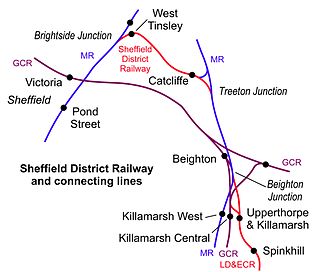
Catcliffe railway station is a former railway station in the Catcliffe area of Rotherham, South Yorkshire, England.
The Lancashire, Derbyshire and East Coast Railway (LD&ECR) was built to connect coalfields in Derbyshire and Nottinghamshire with Warrington and a new port on the Lincolnshire coast. It was a huge undertaking, and the company was unable to raise the money to build its line. With the financial help of the Great Eastern Railway it managed to open between Chesterfield and Lincoln with a branch towards Sheffield from 1896. Despite efforts to promote tourist travel, the passenger business was never buoyant, but collieries were connected to the line, at first and in succeeding years. The Great Eastern Railway, and other main line companies, transported coal to the southern counties, and the company's engines took coal to Immingham in great quantities. The company had a fleet of tank engines.

Bolsover South is a former railway station in Carr Vale, Bolsover, Derbyshire, England.
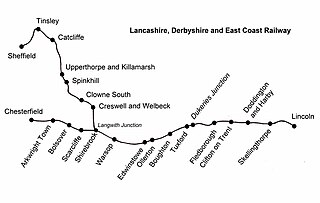
Scarcliffe railway station is a former railway station in Scarcliffe, Derbyshire, England.

Shirebrook North railway station was a railway station serving the town of Shirebrook in Derbyshire, England. It was on the Lancashire, Derbyshire and East Coast Railway running from Chesterfield to Lincoln. The station was also on the former Shirebrook North to Nottingham Victoria Line and the Sheffield District Railway. The station has since been demolished and housing now occupies parts of the site with some stub rails nearby serving a train scrapper.

Warsop railway station is a former railway station in Market Warsop, Nottinghamshire, England.
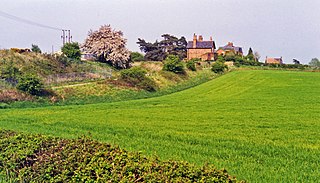
Edwinstowe railway station is a former railway station in Edwinstowe, Nottinghamshire, England.

Ollerton railway station is a former railway station in Ollerton, Nottinghamshire, England.
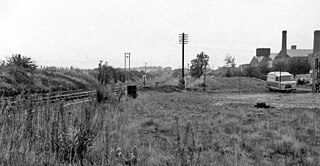
Boughton railway station served the village of Boughton in Nottinghamshire, England from 1897 to 1955 when it was closed. It has since been razed to the ground.

Clifton-on-Trent railway station is a former railway station between North Clifton and South Clifton in eastern Nottinghamshire, England.

Doddington and Harby railway station is a former railway station on the Nottinghamshire border with Lincolnshire, England.

Skellingthorpe railway station is one of two former railway stations in Skellingthorpe, Lincolnshire, England. It replaced the former station on the GNR.
Bolsover Tunnel is a disused and infilled twin-track railway tunnel between Carr Vale and Scarcliffe in Derbyshire, England.
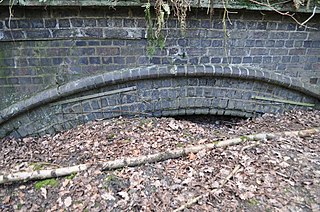
Duckmanton Tunnel is a former 501-yard (458-metre) long twin-track railway tunnel between Chesterfield and Arkwright Town in Derbyshire, England.
Doe Lea Viaduct is a former railway viaduct near Carr Vale, Bolsover, Derbyshire, England.
Boythorpe Viaduct was a railway viaduct in Chesterfield, England.

Duckmanton Junction is a former railway junction near Arkwright Town in Derbyshire, England.
Langwith is a former railway station in the Langwith Maltings area of Langwith in north eastern Derbyshire, England.
The Beighton Branch was a railway branch line built by the Lancashire, Derbyshire and East Coast Railway (LD&ECR) in north eastern Derbyshire, England.















